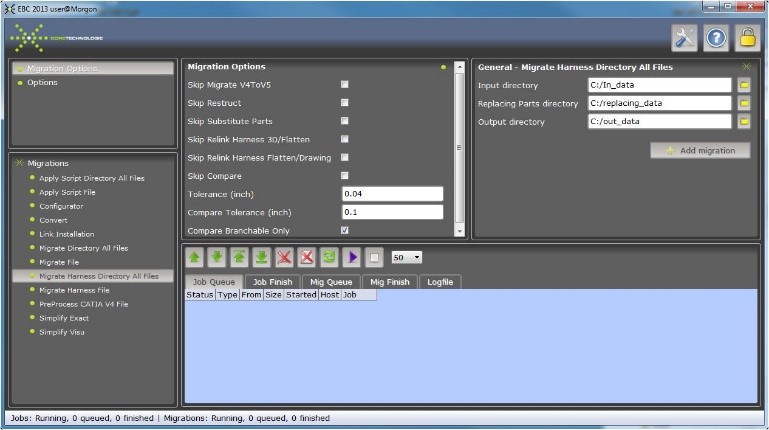By Mike Wurzman – RSJ Technical Consulting
Let’s face facts: We have a costly industry-wide compliance data collection problem, and it’s only getting worse. As contract manufacturers, we are asked to collect and report this compliance information for all the materials and parts we use. For a PCB, this can mean hundreds to thousands of parts from companies worldwide. Yet we only have access to distributors, and they rarely have the full material data we need to do our job correctly. This has given rise to an entire multi-billion-dollar data collection industry, with associated costs springing up that we are expected to absorb. With the new legislation passed in the EU, we will be required to provide full sustainability data as well as the current RoHS and REACH data for every part and material. As a result, the data collection problem will continue to grow, with crippling costs that will become unsustainable with today’s business model. To avoid this reality, we as an industry have to drive change in the data collection process.
A little background on what is changing: The EU has passed its EU Green Deal, a set of policies aimed to create a sustainable future. They have also passed the Circular Economy Action Plan (CEAP) and the Chemical Strategy for Sustainability (CSS) to start making supply chain and design requirements actionable. Individual legislations are to be re-written to harmonize and drive the move to sustainable products. The battery directive is the first piece of legislation being rewritten to require a greatly expanded data set, wherein the suppliers will be required to provide not only the chemical substance content but also the greenhouse gas and other sustainability data. Once rolled out, it will be expanded to RoHS, REACH, ELV, and others. The legislation has also mandated that in the future we will be required to provide Life Cycle Assessment (LCA) data to support our design and supplier choices. Right now the LCA companies make the majority of their money by reformatting the data and entering it into their software. I assert that we cannot afford these costs going forward.
In addition to increased costs, we are facing additional liabilities from data collection as well. The data for REACH, RoHS, and other legislations are being used to determine and report compliance. If the data we collect and provide is bad, we will likely be on the hook for product recalls, or otherwise held responsible for a product being banned from a region. The EU has recently passed legislation to step up their enforcement efforts, so the days of this being a “don’t worry about it” potential problem are coming to an end. Of particular concern is the amount of counterfeit or just plain fraudulent data swamping the data collection market. As an engineer who has spent 18 years in data collection management, whenever I see the phrase “to the best of my knowledge,” I know the data is suspect. Simply put, if it is accurate, it is already known to be correct. Often, I see data that includes a wild card, “Misc. not to disclose”. This is of course acceptable if it comes from the actual manufacturer of the material, who knows what it represents and is tracking it against the global declarable substance lists. But all too often I see instances where someone doesn’t get the disclosure from the material company and puts this wild card in to give the data a veneer of being official.
This leads to a problem, namely, how do we know if the data is real or made up? In a recent review, it was noted that there were over 100 data submissions floating through the supply chains for Velcro that incorrectly stated the material used, and therefore their data could not have come from the manufacturer of Velcro. With the difficulties in extracting data at multiple levels of depth in the supply chains, companies are under pressure to speed up reporting and often just take report data that looks real, but may not be from the actual manufacturer. This is especially true for some overseas suppliers. Right now, we have no way of discerning if the data being collected are complete and real, counterfeit, or entirely fraudulent. Some sources are much better than others, but all have weaknesses. When you consider, for example, substances like PFASs with a future reporting requirement of 25 PPB, you start to gain an appreciation of the scope and depth of the problem that our multi-level supply chain creates.
A problem of this magnitude won’t be solved with tweaks and band-aids but requires an approach from an entirely new angle. We must accept, and demand that the needed compliance information be considered as a component of the physical part we are buying. It must be shipped along with the part, in digital format, and follow the part throughout the supply chains all the way to the OEM. With the data becoming a fundamental component of the hard part, we need assurance that it is assembled with the same quality as the hard part. All the same basic quality principles used in part manufacturing can be applied to compliance data. But if it is not, we are the ones on the front lines of liability.
Current compliance data reminds me of the quality issues in the parts industry from the 60s and early 70s, before the move to zero defects. Most data outside of IMDS in automotive, for example, is exchanged point to point between various systems where there is no traceability. So when there is a problem, how do we know if it was fixed by the person who actually knows the real data, versus whether it was done by someone who made it “look” right? The attitude today seems to be, that if the customer accepts it, it must be good enough, and if there is a problem, they will send it back and we will try to fix it. Is this “good enough” approach sufficient in light of our future realities–both costs and liabilities? I think not.
The Solution:
We need to rethink compliance data collection and realize it is part of a greater sustainability issue. To limit liability, the data will need to be verifiable, that is, traceable to the material manufacturers who know what actual substances are contained in the product as shipped and what they become after the product is cured (if needed). To contain the runaway costs of current compliance data collection, we also need to establish a new cross-industry data structure that includes a full material declaration (FMD) for the basic part which supports RoHS and REACH analysis. This new data structure must go beyond the standard formats such as IPC1752A or B to provide an exchange format that will allow for future integration directly into LCA software. This forthcoming data structure will be included in what is currently called the “Product Passport,” as an aggregate of the substance content with the greenhouse gas impact, conflict mineral and recyclate content, recyclability, and much more. As an industry, we need to get behind this effort.
Efforts are underway to create the factory of the future. I envision this to include designing the product not only for sustainability but also for sustainable manufacturing. This will require us to integrate material data collection efforts into the “factory of future” efforts. It is time for us to begin demanding that the data be supplied with the purchase of samples to the designers of the products we manufacture, or directly to us with the purchase of parts. However, this will only happen if we band together as an industry to put pressure on our customers, suppliers, and component manufacturers. To make this happen we must create the change we need. We need to force the creation of a future where data no longer is collected but received with the shipping paperwork. We need to drive on organizations, such as IPC/WHMA to establish industry standards so this can happen.
































































